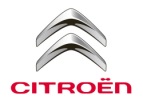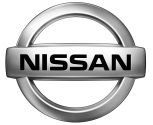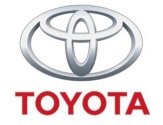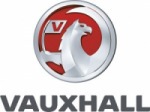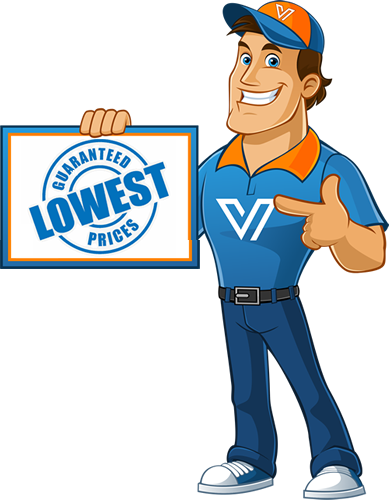Size matters! Choosing the right van

Whatever your trade, picking the right van for your business is essential and can make a massive difference to your bottom line. Know your chassis cab from your luton? Vans come in a multitude of shapes and sizes. Van Champ gives you the low down on what to consider and offers you an insight into the various permutations.
When purchasing a van, the prerequisite is knowing how much loadspace you are going to need. If you're delivering flowers you're going to need something less imposing compared with those shifting heavy cargo. If you’re going to be delivering to shops and restaurants in busy towns and cities, you’ll need something maneuverable, nifty to drive and with easy access to the cargo area. If you need a vehicle for journeys to out-of-town locations such as industrial estates or retail parks, or if you're transporting lots of equipment, you're going to need greater carrying capacity.
Different types of cargo require different loadspaces, so calculate whether a small load carrying car-based van is going to be man enough for the job or whether you're going to need a sturdy long wheel base model.
Choosing the appropriate size of van is probably the most important decision you’ll make. If you're thinking of buying a Ford Transit just because you've always done so in the past, then consider – could you make do with the smaller Transit Custom or even Connect? Both are cheaper to buy than the standard Transit and you will save money on fuel. Conversely, a smaller van might be suitable now, but consider what your business might need in another 12 months. Will a smaller vehicle still be suitable?
Doors are also a key consideration. Do you require a sliding door? If so which side? Do you need two? Depending on the make or type of van, at the rear you can get twin rear doors, a rear hatch or even roller shutters.
Finally, don't get hung up about the badge. Many of today’s vans are pretty much the same model with different branding. For example the Citroën Dispatch, Fiat Scudo and Peugeot Partner are clones of each other; so are the Renault Kangoo and Mercedes Citan, Renault Trafic and Vauxhall Vivaro.
Car-derived vans
Car derived vans are built on the platform of a car, with the rear seats removed to create loadspace. They are are ideally suited to negotiating heavy traffic and narrow streets and perfect for small load deliveries or contractors who don't need to carry many too many tools.
Typically they are the van versions of popular models such as the Vauxhall Corsa, the Ford Fiesta or the Renault Clio.
Small vans
This sized van will carry a greater load than a car-derived van and they are usually easier to manouvere, and often more fuel efficient than a panel van. Light or small vans such as a Ford Transit Connect or VW Caddy will take reasonable payloads.
Typical Specifications
Load space dimensions: 1.7m L x 1.49m W x 1.2m H
Payload: 600-900 kg
Typical fuel: consumption: (mpg) 40 - 50 mpg
Panel vans
Panel vans are the dominant van on our roads, popular with electricians, plumbers and delivery firms. They offer a big range of body styles and provide a good balance between load carrying ability and ease of driving. The massively popular Ford Transit, the Mercedes Sprinter and Volkswagen Transporter, are better suited to larger deliveries or contractors who need to carry a substantial amount of equipment for multiple jobs.
Typical Specifications
Load space dimensions: 2.4m L x 1.7m W x 1.4m H or 1.65 w/med roof
Payload: 900-1200 kg
Typical fuel consumption: 30 - 40 mpg
Long wheelbase vans
A tall, longer panel van with a rectangular body. It often has a rear and a side loading door giving optimum access to cargo. Popular with trades with medium load requirements, speedy and swift enough to manoeuvre on urban roads and motorways.
Typical Specifications
Load space dimensions: 3.4m L x 1.7m W x 1.7m H
Payload: 1200-1500 kg
Typical fuel consumption: 28-35 mpg
Luton vans
The luton van is the king of removals. A box type body extending over the cab for extra load space. Includes a tail-lift at the rear for the heaviest items. Unlike panel vans, the entire load compartment is usually above the rear wheels, so the rear wheel arches don't interfere with your load space. The luton is perfect for large heavy or bulky items.
Typical Specifications
Load space dimensions: 4m L x 2m W x 2.2m H
Payload: 1600-1800kg
Typical fuel consumption: 20-30mpg
Dropside vans
A van that has metal side that detach and drop down, meaning more flexibility when planning routes compared to box vans. Flatbed means no height restrictions and optimised for use with a crane.. Quicker to unload form all side, this can make them extremely efficient on mult-drop routes as the don't need to wait for a forklift to become available for unloading take place. Loved by builders and anyone else with a bulky or messy load to transport.
Typical Specifications
Load space dimensions: 4m L x 2m W
Payload approx: 1900kg
Typical fuel consumption: 20-30mpg
Crew vans
A crew van is ideal if you need the load-lugging benefits of a dropside but want to carry a few more passengers. Also known as a double cab van, there is an extra line of seating behind the front seats for extra crew carrying capacity. These vehicles are a firm favourite with road gangs and scaffolders.
Typical Specifications
Load space dimensions: 3m L x 2m W
Payload approx: 1750kg
Typical fuel consumption: 20-30mpg
If none of the above suit, chassis cabs from manufacturers such as Ford, Nissan and Citroen allow you to construct the van to your own specification if your size or other requirements can’t be met by any of the categories above.
The sizes and dimensions quoted above are approximate and should only be used as an indicator.

